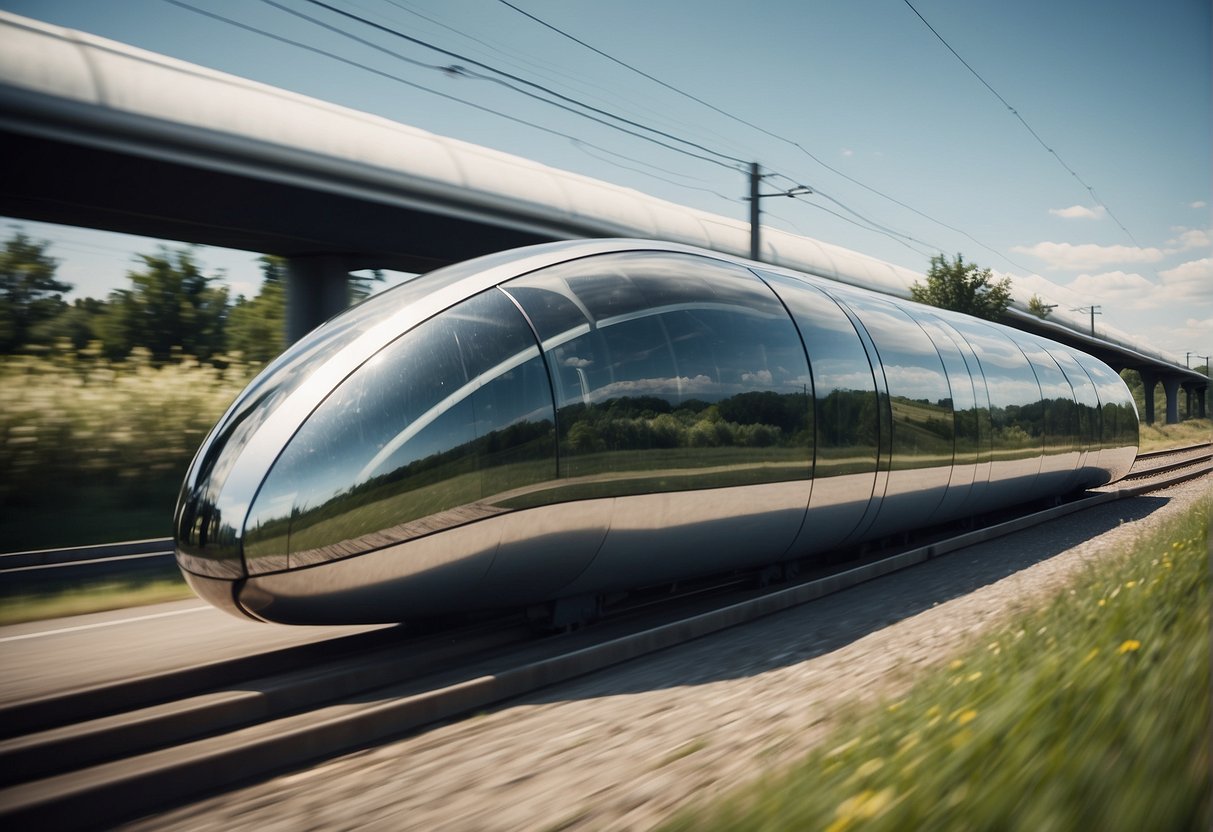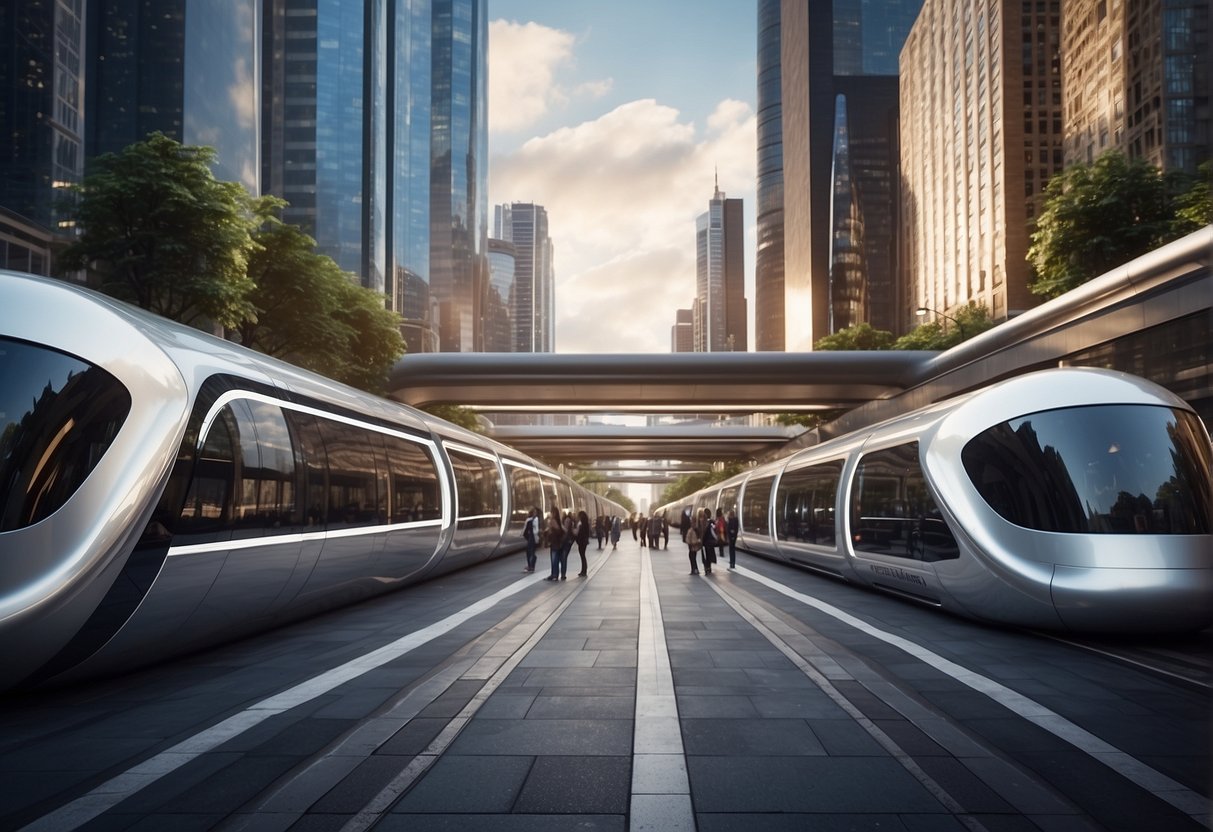Dutch Hyperloop Development: Pioneering Sustainable Transportation in the Netherlands
Published Thursday, March 28, 2024 By TechRant Staff

The Dutch Hyperloop project represents a bold step forward in transportation technology, aimed at revolutionizing how people and goods move across long distances. In the Netherlands, the construction of the European Hyperloop Center is a testament to the country’s commitment to innovation in public transport infrastructure. By 2030, this cutting-edge transport system could potentially redefine travel not only within the country but also across Europe, indicating a significant leap from traditional rail and road networks to a more efficient and sustainable mode of transport. The hyperloop concept, involving capsules propelled through low-pressure tubes, is anticipated to offer high-speed connectivity with minimal environmental impact.
In the quiet expanses of the northern Netherlands, the European Hyperloop Center stands as the core facility driving the development of this futuristic technology. At its heart lies a quarter-mile long white steel test tube, designed to demonstrate and refine the hyperloop technology that may soon enable passenger and freight capsules to glide at unprecedented speeds. The existence of this facility signifies a pivotal moment for the Dutch hyperloop initiative, reflecting the nation’s proactive approach to embracing and fostering technological advancements.
The hyperloop system is envisaged to integrate seamlessly with existing transport and infrastructure, marrying speed with sustainability. As the Netherlands presses forward, the European Hyperloop Center serves as a crucial hub for progress, drawing on private investment as well as public enthusiasm for a technologically driven future. While the hyperloop remains in its experimental stages, the groundwork laid by the Dutch could pave the way for a new era in European transport, cementing the Netherlands’ position as a leader in the adoption and development of innovative transport technologies.
Technology and Engineering
In the Netherlands, the development of hyperloop technology, particularly by Hardt Hyperloop, involves intricate engineering aimed at achieving high-speed transportation through low-pressure tubes using magnetic propulsion and innovations such as lane switching.
Hyperloop Components
The key components of the hyperloop system include the capsule, which carries passengers or cargo, and the low-pressure tube through which the capsule travels. Hardt Hyperloop’s design incorporates a cutting-edge capsule that glides through the tube with minimal aerodynamic resistance. The tube maintains a low-pressure environment, which drastically reduces air resistance and allows the capsule to achieve high speeds with less energy.
Lane Switching
Lane switching technology by Hardt Hyperloop represents a significant engineering feat. It enables capsules to change tracks without the need for complex mechanical systems. This technology demonstration showcases the ability to merge and diverge from different sections of track seamlessly, a critical element for creating an efficient hyperloop network.
Magnetic Propulsion
The propulsion of the hyperloop capsule is facilitated by magnets and magnetic fields. Essentially, the capsule levitates above the track, propelled forward by electromagnetic forces. This method of propulsion is not only efficient but also minimizes maintenance needs due to its lack of physical contact with the track. Moreover, the controlled use of magnetic fields ensures that the capsules can reach and maintain high speeds with precision.
Economic Impact and Investment

The economic ramifications of the Dutch Hyperloop are substantial, encompassing considerations of cost and the aggregation of investments from various stakeholders.
Cost Analysis
An extensive cost analysis is pivotal to understand the economic viability of the Hyperloop. Studies have identified that the Hyperloop presents a sustainable investment. The feasibility of the technology weighs heavily on cost optimizations, where operational efficiency is balanced against the initial capital required for infrastructure development. The Dutch government assesses proactive approaches to minimize expenditure while maximizing the projected benefits.
Funding and Investment
The funding landscape for the Dutch Hyperloop is diverse, including private investment, provincial government contributions, Dutch national government funds, and potentially the European Commission’s involvement. There is a concerted effort to secure the necessary funding to propel the Hyperloop from a conceptual stage to an operational reality. With the promise of significant CO2 reduction, the transportation sector’s investment appears to offer both environmental and economic growth potential. Government commitments thus far indicate a favorable outlook for the continued investment into the project.
